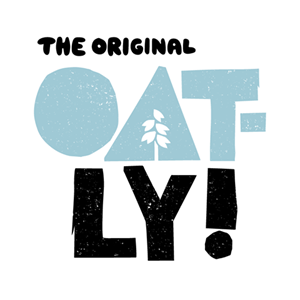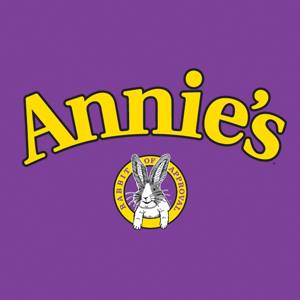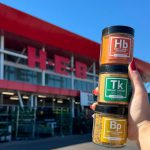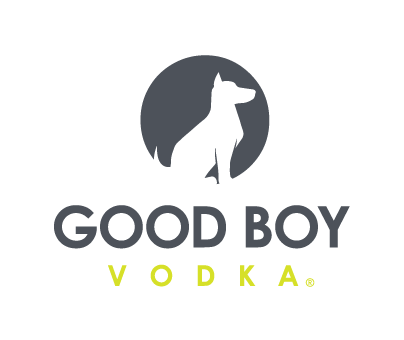Welcome to Public Life: Lessons from the Oatly Short Report

Last month, still hot on the hype of its highly publicized May IPO, plant-based milk maker Oatly sustained its first major setback as a publicly traded company when Spruce Point Capital Management, a research firm focused on short selling, released a 124-page document claiming that the company had misrepresented its success and “will never achieve profitability.”
Oatly denied the allegations in the report, which also accused the brand of overstating both its revenue and its environmental sustainability claims, but its release nevertheless sent Oatly’s stock tumbling more than 9% overnight. Many analysts stood by their initial bull ratings for the Swedish company in its wake, with Bank of America arguing that, among other issues, Spruce Point was overly reliant on Nielsen scanner data that represents barely one-third of Oatly’s overall sales. The impact on the brand in the public market, however, was very real and brutally rapid.
The analysts and the short term stock dips were just the start for Oatly. As often happens during this kind of public company drama, the lawyers are starring in the second act. On Tuesday, a press release from law firm Hagens Berman sought Oatly investors to sign on to a class action lawsuit alleging the company had inflated its gross margins and exaggerated its success in China. Another class action suit, filed by Kai Jochims last month in the U. S. District Court, Southern District of New York, cited the report as evidence of Oatly making false statements and “failing to disclose adverse facts known to them.”
Living in Public
Oatly is just one of several high profile better-for-you food and beverage IPOs over the past two years. Since 2019, a number of brands have gone public in swift succession, including Beyond Meat, Laird Superfood, Zevia and Vital Farms. In Canada, energy drink brand GURU, sustainable water company Flow Alkaline Spring Water and plant-based food maker Sol Cuisine have also listed. Other plant-based brands like NotCo and Impossible Foods have reportedly been gearing up for public listings while others, such as Vita Coco parent company All Market Inc. and HINT are also said to be strongly considering the public markets. This is, of course, to say nothing of the influx of SPACs seeking to acquire and take public food and beverage brands (including the recent purchase and IPO of meat snacks brand Stryve) or the filings of retailers like The Fresh Market and wholesalers such as Mission Produce.
For many long term food and beverage investors, this current better-for-you wave is an exciting opportunity, validating their financing of plant-based protein and other health and wellness trends that have been building for over a decade. Outside of the windfall of investment dollars they generate, the mainstream media attention around IPOs can help push brands into leadership positions and draw more consumers to the company and the category. Wayne Wu, general partner at private equity firm VMG partners, said the rush of public offerings “really shows the mainstream appeal for the broader investment community” and finally created an avenue for public investors to get involved with wellness-minded companies.
But as Oatly saw firsthand this summer, going public comes at a very hefty price. Though it’s been only a month since the short report, Oatly’s stock price as of this writing has yet to recover to its June highs of nearly $30 per share and it has remained hovering around $18-19.
Arthur Gallego, CEO of Sundaze Beverages and a beverage marketing and communications consultant, told BevNET that while the glamor of a high profile IPO is alluring, particularly at this current moment where brands with sustainability missions can command large valuations, companies need to strongly consider the costs of living in public. For Oatly, a $10 billion valuation coupled with massive media hype was equivalent to an 11-figure “Kick Me” sign.
“The thing that many of these companies don’t realize is that the minute you go public you’ve got a target on your back,” Gallego said. “You’ve got a target on your back from competitors, you’ve got a target on your back from individual investors who want some kind of profit, you’ve got a target on your back from activist investors who are trying to demand change in the company if they feel it needs it.”
Gallego noted that one of Spruce Point’s key arguments against Oatly was to peel apart its sustainability initiatives and to accuse the company of “greenwashing” — playing up its environmental bonafides while trying to suppress or divert from the parts of its business with larger carbon footprints.
As brands’ environmental impact becomes a driver for consumer purchasing decisions, investors both public and private have honed their portfolio brands’ sustainability cred. However, if you’re selling your company to investors as better-for-the-planet, that then becomes another line item you need to deliver on quarter by quarter, Gallego said, and thus it becomes another liability. Activist investors could be inclined to put pressure on companies to consistently decrease emissions without hurting net revenue, while short-sellers and research firms (such as Spruce Point) have the opportunity to turn over every rock to find weaknesses in a sustainability plan. If brands aren’t actually as eco-friendly as they claim, it may not just warn off investors but it is also more likely to reach consumers.
“For a lot of these brands going public with this halo of sustainability, the thing that they have to remember is that from the minute they’re listed and then every year after that, there has to be a substantive benchmarking against that sustainability programming,” Gallego said. “Let’s just use carbon footprint as an example; every year after they go public that carbon footprint has to get lower and lower and lower. That’s their commitment, right? That’s what they promised you as an investor.”
The demand for brands to be mission-driven has also led some brands to convert to a Public Benefit Corporation (PBC) structure, as both Zevia and All Market have done. Being a PBC allows companies more flexibility on their sustainability goals, including safeguarding a board of directors from liability for decisions that boost their mission but cut into profit. However, it also means that traditional share-boosting strategies, such as layoffs to cut expenses, aren’t available to CEOs, either. As well, shareholder interests are still protected and companies are required to balance their rights.
Brandon Ng, an investment banker with Houlihan Lokey, told BevNET that he sees the sustainability plays of recent IPOs as merely “table stakes,” but that companies need to prioritize profitability and should be cautious not to put the hype before the fundamentals.
Ng warned that many investors are going to become more diligent about needing to see, at minimum, a clear pathway to profitability. “Hyping a brand up and raising a ton of money, and pumping it all the way back to topline in order to grow at all costs, is probably not prudent,” he said. Companies that don’t deliver on profitability can see value plummet quickly, and at some point “you have to face the very investors that put money in your pockets and be accountable for it.”
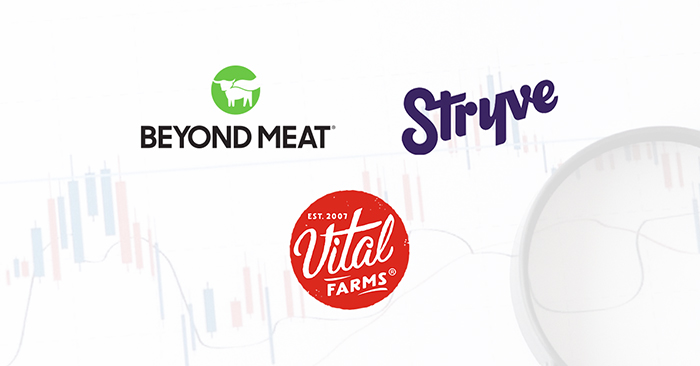
Storytelling and Leadership
It’s not just the company that’s affected when you’re a public company: the story and role of the founders and executives of the brand are now affecting your shareholders’ investments as well, and the more shareholders there are, the less control you have over that story.
In the case of Oatly, the company got out ahead of the curve in introducing CEO Toni Petersson to the public with a commercial spot during the 2021 Super Bowl. Petersson went on to become the subject of various consumer-facing media profiles prior to the IPO, although after the company listed on the NASDAQ subjects such as his personal salary and net worth became a broader topic of discussion. While the founder’s personal life will not always become a factor in public listings, it is always a risk, Gallego said, and it can have a significant impact on not just stock price but also internal work culture.
“I think a lot of these companies think that going public is the finish line, but it actually is the starting line. It’s a complete reset,” Gallego said. “You are more deeply accountable on so many levels and some of those might touch on that founder or entrepreneur’s personal life…. So that’s another factor in your relationship with your company and your employees that is ongoing.”
Going public being only the beginning was also the sentiment of John Foraker, CEO of Once Upon a Farm, who was CEO of mac and cheese brand Annie’s when it went public in 2012 (it was later acquired by General Mills). The operational shift had a significant effect on his day-to-day schedule, with roughly half of his time going towards communicating with Wall Street investors and analysts. He suggested that CEOs need to consider if the “organization is deep enough that you’re not going to take your eye off the ball of basic execution.” In particular, he said, the volatility of the stock price and the demand for quarterly earnings reports puts more pressure on employees, often causing undue stress, making clear and open communication with the team about the state of operations and stock performance vital to the success of the business.
“It’s a big challenge to make sure that the organization doesn’t get too short-term focused,” Foraker said. “With all of the Street’s obsession around quarters and short-term performance, it’s very hard for people to separate that from what they do in their own job.”
Foraker highlighted strong internal planning as a key to succeeding on the public market, noting that Annie’s needed to be able to accurately call quarterly financial results with “a level of precision, forecasting and competency that is dramatically higher than most private companies.” While Annie’s filed its IPO with a “long, clear strategy around growth,” he said the pressure to calculate earnings month by month put stress on the organization.
Ultimately, Foraker said life as the CEO of a public company had its benefits. On a personal level, he noted that it helped to elevate his own platform while generating credibility that helped the company to “punch above its weight class” and form partnerships that may have been unavailable as a smaller private brand. While the role also led to a lot of direct criticism from investors, analysts, media and even armchair pundits on social media, Foraker said he often found validity in those critiques and often applied them.
“It was a huge growth opportunity for me personally,” he said. “There were many elements of being a public company CEO that I really enjoyed, like the opportunity for me to speak up on issues that mattered to me, the things that mattered to the company, the branding platform it gave us, and it gave us incredible credibility with customers…. I feel like if I was going to do it again it would be a lot easier. It still would be challenging, but some of the lessons are ones that you can learn and take with you.”
Despite the risks, the benefits of going public can be great for both the company and the industry as better-for-you brands continue to grow and draw in new consumers. According to Wu, going public may be a massive challenge but it’s also an opportunity to maintain independence. So long as a company’s fundamentals are strong and it can continue to perform quarter to quarter, he said, an IPO could be the best option for a brand.
“People should pursue the paths that make the most sense for them and not chase the narrative and not do it because they’re following some pot of gold at the end of a rainbow,” Wu said. “They should do the right thing for the business that creates a sustainable, successful business in the long term.”

